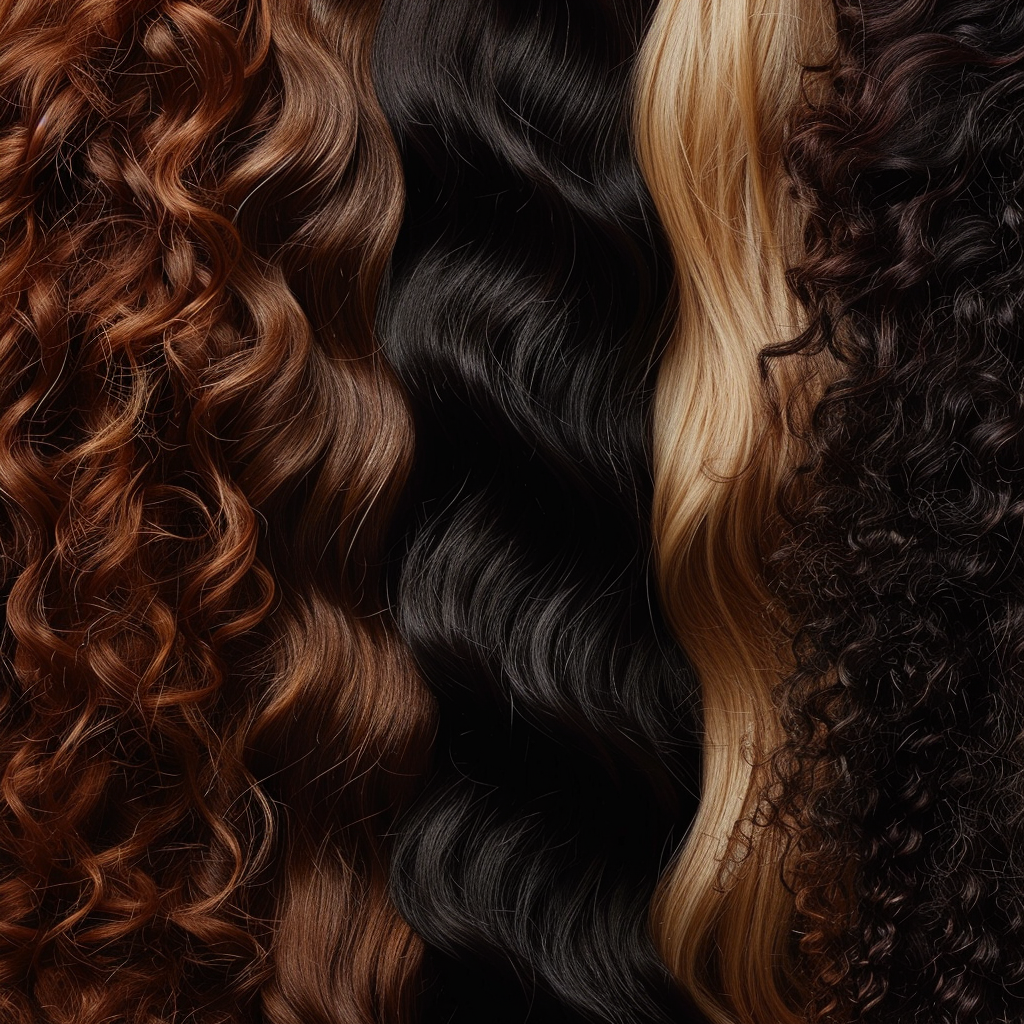
Step 1: Understanding the Foundations of Hair Types
Before diving into products and treatments, it's crucial to understand the basics of your hair's unique characteristics. Here's how to break it down:
Porosity: This measures your hair's ability to absorb and retain moisture. To test porosity, simply take a strand of clean hair and drop it into a glass of water. If it sinks quickly, your hair has a high porosity (very absorbent). If it floats or sinks slowly, it's low porosity (less absorbent). Medium porosity will sink gradually.
Density: This refers to the number of hair strands on your scalp. To assess density, part your hair and look at the scalp area. If your scalp is easily visible, you have low density. If it's somewhat visible, you have medium density. If it's hardly visible, you have high density.
Texture: Observe your hair's natural pattern without any products or styling. If it dries straight without a bend or curl, you have straight hair. If it has a slight curve or "S" shape, it's wavy. If it forms defined loops or spirals, it's curly. Tight coils or zigzags indicate kinky hair.
Elasticity: This determines your hair's strength and ability to return to its original length without breaking. Gently stretch a wet hair strand; high elasticity is indicated if it stretches a lot before breaking. Low elasticity hair breaks quickly without much stretch.
Step 2: Performing the Tests
Porosity Test: You'll need a glass of water and a few strands of clean hair.

Density Observation: Stand in front of a mirror with good lighting and part your hair to see how visible your scalp is.

Texture Identification: Let your hair air dry after washing it and observe its natural pattern.

Elasticity Test: Take a wet strand and gently pull it to see how much it stretches before breaking.
Step 3: Interpreting Your Results
High Porosity: Needs moisturizing and protein treatments to fill in the gaps in the hair cuticle.
Low Density: May require volumizing products to make hair appear fuller.
Curly or Kinky Texture: Benefits from hydrating products that define curls and reduce frizz.
Low Elasticity: Requires gentle handling and strengthening treatments.
Step 4: Choosing the Right Products

Based on your hair type results, select products that are specifically formulated to address your needs. For example:
High Porosity: Look for leave-in conditioners, oils, and creams that can provide lasting moisture and seal the cuticle.
Low Density: Volumizing shampoos and lightweight conditioners can help without weighing hair down.
Curly or Kinky: Creams, butters, and gels that enhance curl definition and provide moisture are key.
Low Elasticity: Protein-based treatments and deep conditioners can help improve hair strength.
Step 5: Crafting Your Personalized Hair Care Routine

Now that you know your hair type and have selected appropriate products, establish a routine that nurtures and protects your hair. Remember, consistency is key to seeing improvements and maintaining the health of your hair.
Weekly Treatments: Depending on your hair's needs, incorporate deep conditioning or protein treatments.
Daily Maintenance: Use suitable shampoos, conditioners, and styling products that align with your hair type.
Regular Assessment: Your hair's needs can change with seasons, diet, or health. Regularly re-evaluate its condition and adjust your routine as needed.
Your Hair, Your Journey

Embrace the uniqueness of your hair and enjoy the process of learning what works best for you. Remember, hair care is deeply personal, and there's no one-size-fits-all solution. Celebrate your hair's natural beauty and enjoy the journey to healthier, happier locks.

Comments (0)
Back to BLOG